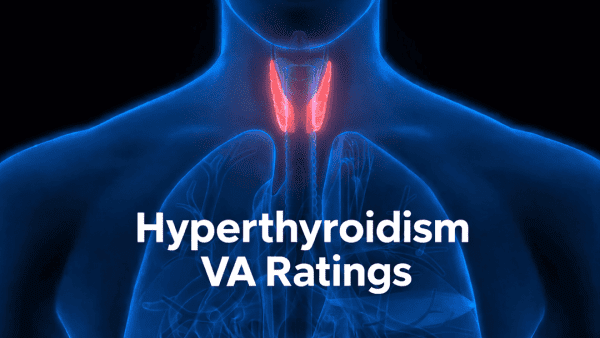Looking for Expert-Level VA Claim Answers?📱Call Us Now! 737-295-2226
If you’ve heard about the automatic 50% PTSD rating, you might be wondering if it really means every veteran diagnosed with PTSD automatically gets 50% disability from the VA.
It’s a common misconception. While some veterans do receive a 50% PTSD rating automatically, this only happens under specific circumstances—mainly when PTSD or another mental disorder caused discharge from active duty.
In this guide, we’ll explain exactly when the automatic 50% PTSD rating applies, what the VA looks for, and how other veterans can still qualify for a 50% (or higher) rating based on symptoms and medical evidence.
Table of Contents
Summary of Key Points
- The 50% PTSD Rating is Only Automatic Under Specific Conditions: Veterans discharged from active duty due to a mental disorder from traumatic stress that caused their separation may receive an automatic 50% PTSD rating, but this is temporary and re-evaluated within six months of discharge.
- PTSD Ratings Vary Based on Severity: Outside of the automatic scenario, PTSD is rated from 0% to 100% based on how symptoms affect daily life and work. A 50% rating reflects moderate to severe occupational and social impairment.
- To qualify for a 50% rating, evidence is required. Veterans must provide a current PTSD diagnosis, proof of an in-service event, and a medical nexus connecting the diagnosis to service in order to receive a 50% rating (or higher) through the standard VA claims process.
What is the Automatic 50% PTSD Rating?

Under the Code of Federal Regulations, 38 CFR § 4.129, an automatic 50% PTSD rating (or higher) can be assigned if a service member is discharged from active service due to a mental illness connected to an in-service event.
A follow-up exam will be conducted within six months to determine whether the veteran requires a change in rating. So yes, while there is a pathway to an automatic 50% PTSD rating, it is a very specific and temporary circumstance.
How long does the automatic 50% PTSD rating last?
The automatic 50% PTSD rating lasts for six months following a veteran’s discharge from active service if the discharge was due to a service-connected mental health condition.
After six months, the VA schedules a re-evaluation to determine whether symptoms have improved, worsened, or stabilized. The rating may be continued, increased, or reduced based on the results of that follow-up exam.
Does an automatic 50% PTSD rating mean I get long-term benefits?
Not necessarily. The VA’s automatic 50% PTSD rating is a temporary starting point, not a guaranteed long-term benefit. To maintain or improve your rating, you’ll need to provide ongoing documentation that demonstrates your symptoms continue to impact your ability to work or perform daily tasks.
50% PTSD Rating Criteria
The VA rates PTSD, under 38 CFR § 4.130, diagnostic code (DC) 9411, the Schedule of Ratings for Mental Disorders.
Ratings range from 0% (diagnosed but not interfering with daily functioning or requiring medication) to 100% (total occupational and social impairment, persistent delusions or hallucinations, persistent danger of hurting self or others, among other criteria).
- 50% PTSD rating criteria: Occupational and social impairment with reduced reliability and productivity due to such symptoms as: flattened affect; circumstantial, circumlocutory, or stereotyped speech; panic attacks more than once a week; difficulty in understanding complex commands; impairment of short- and long-term memory (e.g., retention of only highly learned material, forgetting to complete tasks); impaired judgment; impaired abstract thinking; disturbances of motivation and mood; difficulty in establishing and maintaining effective work and social relationships.
-
For the complete PTSD ratings guide, check out VA PTSD Ratings Explained: Understanding the PTSD Rating Chart
Bonus Resource: The 15 BEST 50% VA Disability Benefits
Conclusion
While there is a pathway to an automatic 50% PTSD rating from the VA, not every veteran diagnosed with PTSD gets an automatic rating.
If you’ve been discharged from the military because of a mental disorder that developed in service as a result of a highly stressful event and caused your release, or if you underwent a related mental health–required hospitalization or surgery, you will be granted a VA disability rating of not less than 50% for PTSD, with a follow-up exam scheduled within six months to determine if your rating should be continued, increased, or reduced.
For veterans who have not been discharged due to PTSD but are later diagnosed, the VA assigns ratings from 0% to 100%, depending on the severity of symptoms and how they impact daily functioning and employability.
About VA Claims Insider

- VA Claims Insider is the #1 most trusted name in VA disability claims.
- Work directly with a VA claims coach who can guide you through the claims process.
- 25,000+ disabled veterans served in our membership programs since 2016.
- 30% average rating increase for veterans who complete our #1-rated Elite program.
- 4.7/5.0 average rating out of 5,500+ total reviews; over 4,500 5-star reviews.
FAQs | Frequently Asked Questions
What is the automatic 50% PTSD rating?
The only automatic rating for PTSD is assigned when a service member is discharged from service due to a service-connected mental health condition. In that case, an automatic 50% rating is applied and will be reevaluated within six months of their separation from service.
How long does the automatic 50% PTSD rating last?
The automatic 50% PTSD rating lasts for six months following a veteran’s discharge from active service if the discharge was due to a service-connected mental health condition. After that period, the VA schedules a re-evaluation to determine whether symptoms have improved, worsened, or stabilized. The rating may be continued, increased, or reduced based on the results of that follow-up exam.
Does an automatic 50% PTSD rating guarantee long-term benefits?
No. The automatic 50% rating is a temporary starting point, not a guaranteed long-term benefit. To keep or increase your rating, you’ll need ongoing documentation showing that your symptoms persist and affect your ability to work or maintain daily functioning. Veterans often strengthen their case through private medical evaluations or nexus letters.
Can the VA reduce your automatic 50% PTSD rating after the re-evaluation?
Yes. If your symptoms improve significantly or you no longer meet the 50% criteria, the VA can lower your rating after the six-month re-examination. However, if your symptoms remain the same or worsen, the rating can be continued or even increased. Keeping consistent treatment records and updated medical evidence can help protect your current rating.
Can I appeal my PTSD rating if the VA lowers it after re-evaluation?
Absolutely. If you believe your new rating doesn’t reflect the severity of your PTSD symptoms, you can file an appeal or request a Higher-Level Review. Providing updated evidence, medical opinions, or personal statements can help demonstrate that your rating should remain the same—or be increased.
What are the common symptoms of PTSD?
PTSD symptoms vary but often include anxiety, intrusive memories, nightmares, sleep problems, and emotional numbness. Veterans may also experience flashbacks, anger, isolation, or physical symptoms such as headaches and a racing heart. If these reactions persist for more than a month or interfere with work and relationships, they may indicate PTSD rather than a short-term trauma response.
About the Author – Katie McCarthy
Katie McCarthy is a writer and editor with experience in daily news and digital and print magazine publishing. She honed her editorial (and firearms) skills at Guns & Ammo before helping launch Black Rifle Coffee Company’s Coffee or Die Magazine as the managing editor. She holds degrees in English (BA) and public administration (MPA). Katie is a military spouse and word nerd who enjoys reading, hiking, camping, gardening, and spending time with her family.



